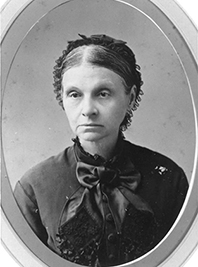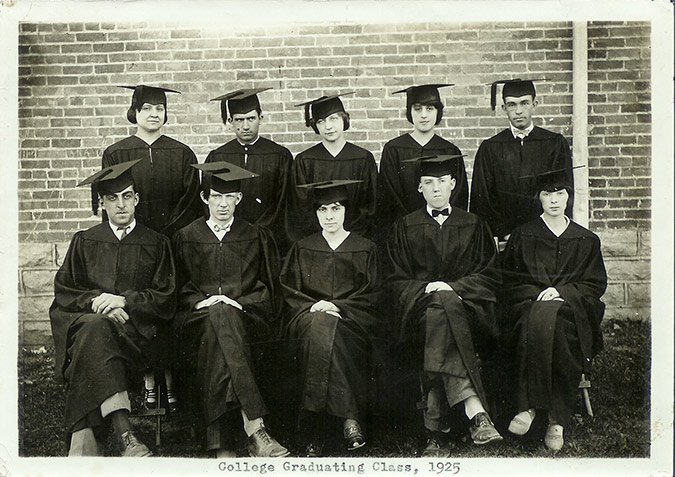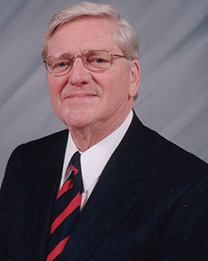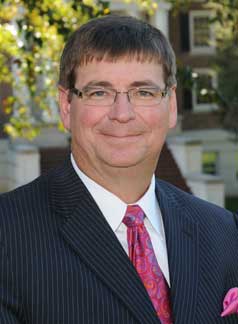The History of LWU
A Presentation by R.V. Bennett Honors Program Students

The Early Years
Lindsey Wilson University was founded in January 1903 as Lindsey Wilson Training School. The school was named in memory of Lindsey Wilson, the deceased nephew and stepson of Mrs. Catherine Wilson of Louisville, Ky. Mrs. Wilson contributed $6,000 toward construction of one of the school's first buildings, which now serves as the L.R. McDonald Administration Building. Funding also came from the citizens of Columbia and Mrs. James Phillips of Lebanon, Ky., for whom Phillips Hall, the women's residence hall, is named. Mrs. Kizzie Russell of Columbia also made substantial gifts, leaving in her will a $1,000 gift for the school. The training school opened for classes in January 1904. According to the minutes of the Louisville Annual Conference of the Methodist Episcopal Church, South, the new school enjoyed early success: "The opening of (Lindsey Wilson Training School) on the 4th of January was rather phenomenal. Before the carpenters and painters could make their departure, in the rush to have the building in readiness for the opening, pupils began to pour into the dormitory and into the town, in numbers, until 222 had matriculated the first session." In its early years, LWU educated grades one through 12. Concentration was on "normal work" to prepare students to be teachers; many continued their education at Vanderbilt University. In 1923, the school's curriculum was reorganized and a college department offering a junior college degree was added. Columbia's citizens responded to the challenge by donating $10,000 to assist the institution's growing needs. In 1934, LWU closed its academy and the school became exclusively a junior college. The college, however, maintained a Model Training School from 1933 through 1979. To read "The Founding of Lindsey Wilson University: 1899-1904" and to view historical pictures of the college, go to the Digital Library of Appalachia.Early Leadership
During its first two decades, LWU had several leaders who served as the school's principal. Frank E. Lewis was the school's first principal, serving during 1904. Lewis was succeeded by S.L. Frogge, who served as principal for one year until P.D. Neilson and R.R. Moss assumed that responsibility in 1905. They directed the school for eight years until J.S. Chandler was named principal in 1913. During World War I, the principalship was held by: Paul Chandler, J.S. Chandler's son; G.R. Crume; and R.V. Bennett, who later became the first president of LWU in 1923.
The Early Junior College Years
Under Bennett's leadership, LWU was transformed into a junior college in 1923 and was molded into a financially and academically strong institution. A Methodist minister, philosopher and mathematician, Bennett was a Academics "splendid scholar," according to the late Noma Dix Winston, a longtime history teacher at LWU who worked under Bennett. "President Bennett was a scholar in the area of mathematics and Biblical studies, he was a distinguished minister in the church, and he was a very respected leader throughout the Methodist Church and in higher education as well," recalled the late Thomas D. Everett, a longtime trustee from Fairview, Ky. "During his presidency, he provided outstanding leadership and helped established LWU as a solid junior college in the Methodist church." Bennett left LWU in 1932 and was replaced by A.P. White. During the Bennett-White years, LWU experienced its first building boom: a building that housed the college's gymnasium, dining room and kitchen was added; a president's home was built; a new training school for teachers was opened; and a 20-acre limestone farm was acquired.White, who came to LWU in 1923 to teach history and social sciences, served as the college's second president from 1932 until his death in 1942. The college's Columbia Campus is named in his honor.
"President White led Lindsey Wilson through one of its most trying periods because most of his administration took place during the Great Depression," Everett said. "During a time when many colleges were forced to close their doors, President White made sure that the doors of education remained wide open at Lindsey Wilson." Lindsey Wilson University's administration also expanded during the Bennett-White era. In 1940, physics professor Asa Shelton was named the college's first full-time registrar and dean of the faculty. And in 1942, the LWU Board of Trustees named Shelton the college's executive vice president to assist White, who was fatally ill with cancer. White died later that year, and he was succeeded by Victor P. Henry. Henry, who served as president from 1942-54, was brought in by the Louisville Conference of the Methodist Church to close LWU.A New Life
Henry fought to keep the college open by increasing enrollment and serving four years without a salary and for five years as superintendent of the Louisville Conference's Columbia District. By one vote, the Louisville Conference voted to keep the college open in 1942. During Henry's 12-year administration, the college expanded its library to a free-standing building and bought additional farmland. The college was accredited for the first time. Also during his tenure, the first international students enrolled at LWU, through Henry's past work as a missionary in Cuba. Many of the campus' buildings during Henry's presidency -- especially following World War II -- were furnished with government surplus furniture. Henry acquired much of the furniture from serving as chaplain with Kentucky's American Legion post. "He sent the college truck out to bring the furniture back to the campus," recalled Martha Henry Berry, Henry's daughter. "Even some of the buildings were government surplus. He never turned down a donation, whether it was monetary or material." Also, during the early years of Henry's administration, some of the college's professors served for half-salary. "So the move to improve the college's finances was a joint resolution, a sacrifice from most, if not all, on campus," Berry said. Because of those sacrifices across campus, the college survived the 1940s and was poised for an expansion that began in the 1950s. Henry was followed by John B. Horton, who served as president from 1954 to 1971. The Horton years marked the second building boom for LWU. Four new buildings were added: a science building (which later became the Elva Goodhue Science Building), a student union building, and Horton Hall and Parrot Hall. Also under Horton, a wing of Phillips Hall was added and the dining center was enlarged with a music hall built over it. L.R. McDonald assumed the presidency in 1971, serving until 1977. Former LWU science teacher Garmoline Carpenter recalled that McDonald came to LWU at a crucial time. "When the storm (of the turbulent 1960s) seemed to have control, along came a strong individual in the person of Dr. McDonald, with a calmness that lifted the turmoil of the storm," she said.
The Begley Era
McDonald was succeeded by John B. Begley, who had been vice president of Scarritt College in Nashville, Tenn. During Begley's 20 years of leadership, LWU evolved into a four-year college and developed a nationally ranked graduate program. Begley transformed LWU from a struggling junior college into one of the top four-year liberal arts colleges in Kentucky. The college's budget grew from $600,000 in 1977 to $13.4 million for the 1996-97 fiscal year, the last year of the Begley presidency. One of the biggest transformations in the college's history came in 1985 when theLWU Board of Trustees voted to make LWU a four-year baccalaureate degree-granting institution. The move was approved by the Louisville and Kentucky Conferences of the United Methodist Church, and in 1988 LWU graduated its first four-year class. Enrollment grew as well during the Begley years, breaking the 1,000-student barrier in 1987 and increasing to more than 1,300 for the 1996-97 school year. The LWU Endowment also grew -- from $600,000 in 1977 to more than $12 million by 1996. Also during the Begley era, LWU experienced its third building boom. Highlights included:- Biggers Sports Center, which seats 1,500, was added to the campus in 1984.
- A major addition to the Cralle Student Union Building was added in 1987. The Holloway Building, which houses the Katie Murrell Library, was opened in 1987. The Katie Murrell Library is an information-age library that houses a multi-media collection of more than 350,000 items and 1,300 current periodical titles focused on the college's curriculum. It also is home to the personal library of Kentucky historian laureate Thomas D. Clark. Students, faculty and staff also have access to millions of other books and journals throughout the world.
- The J.L. Turner Leadership Center -- which houses the management and computer information science division, the Learning Center and a conference center -- was completed in 1988.
- The Roberta D. Cranmer Diningand Conference Center was opened in 1993. In addition to serving LWU students, faculty and staff, the dining and conference center is utilized by citizens and groups throughout Southcentral Kentucky.
- The Henry and Mary Ellen Lilly Residence Hall was opened in 1996. The 102-bed residence hall was the first campus residence to be wired with Internet access.
- The newly renovated W.W. Slider Humanities Center was opened during the 1996-97 school year. The center houses an arts center, classrooms and faculty offices, and it enhanced the region's cultural and artistic offerings.
- The John B. Begley Chapel was dedicated in October 1997. The chapel was designed by world-renowned architect E. Fay Jones, an American Institute of Architects Gold Medal recipient and disciple of Frank Lloyd Wright.
